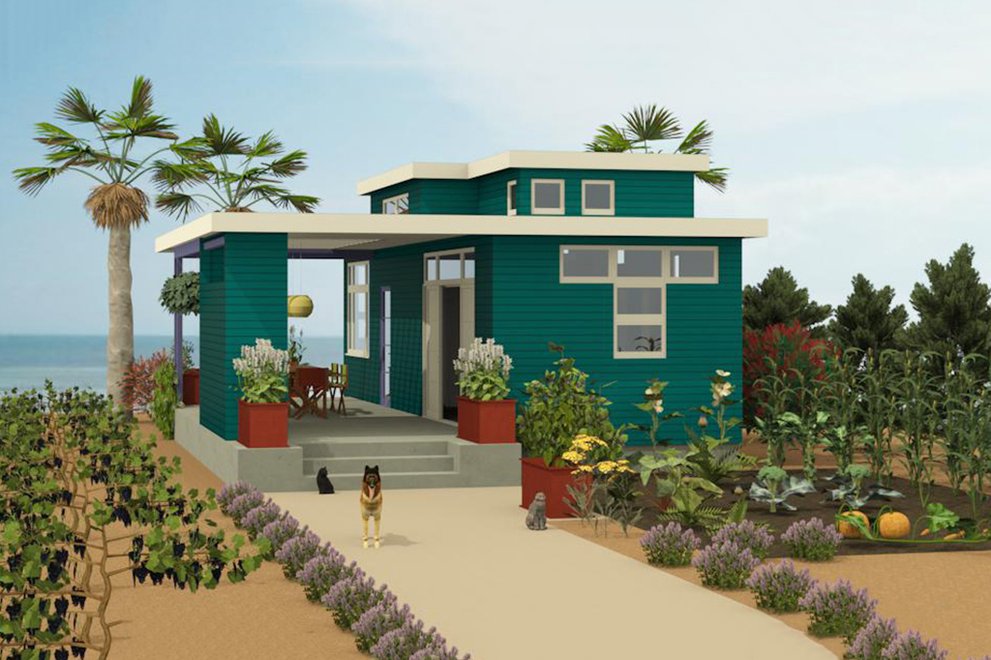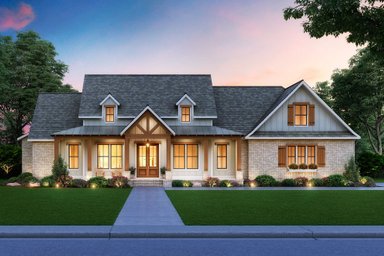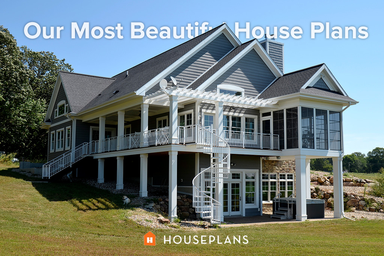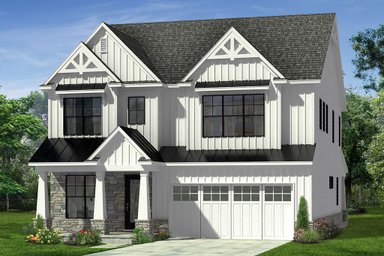[NOTE: This is an update of an earlier post.] The best houses don’t just stand there, they teach. They provide comfort and a sense of place while radiating ideas and discoveries and refreshment long after they’re built.
That’s the case with the very progressive Howard and Betty Liljestrand house in Honolulu of 1952, shown above with its circular driveway and drive-through carport (no awkward — and retrogressive! — backing out of a garage here) by the great modern Hawaiian architect Vladimir Ossipoff, which I have toured. It is one of the few modern houses listed on the National Register of Historic Places. Ossipoff designed some of Honolulu's most famous modern buildings like the Outrigger Canoe Club on Waikiki, and Honolulu's IBM Building.
The Liljestrand house was a cover story for House Beautiful magazine in 1958.
The family is meticulously preserving it as part of the Liljestrand Foundation, which has an excellent website about the house, and Bob Liljestrand, one of the children, led our wonderfully informative tour.
The site on Tantalus Road is jungle mountainside high above the city, with a vividly cinematic panorama
from Diamond Head on the east (above) all the way across to the airport and Pearl Harbor on the west (below).
Howard was a doctor and Betty a nurse and they planned the design even more carefully than a surgical operation, taking years to settle on a final scheme even though, according to Bob: “they had a brief list of requirements – principles that seem obvious today. They wanted morning sun in the kitchen, no morning sun in the bedroom (Howard was a late sleeper), a single loaded corridor, views from every room, no rooms as passageways, lots of storage, a front door easily and naturally accessible, places where work can be left out, and a circular drive.’”
The process got a little frustrating for Val, as he was known, because he finally said “Are we ever going to build this thing?” But it was worth the wait.
From the front there’s no hint of the lower story, which is actually a daylight basement housing a second living room and a large recreation room/lanai that opens to a
broad lawn, which extends across the slope, then around and down to the marvelous boomerang-shaped pool that seems to dramatize the site’s contour lines. Now this is a pool to see as well as swim! (Liljestrand friends Robert and Catherine Thompson, contributed the landscape design.)
Ossipoff deftly choreographs your journey through the house: compressing and enclosing you at the entry with a low ceiling, then expanding and releasing you into the high ceiling-living room as shown above. The design is always pushing and pulling your gaze: out to the landscape and into the room: the fireplace is not
only a fireplace but an anchor between two great vistas and also an elegant cantilevered hearth for sitting.
The long porch off the bedroom wing is both an open-air corridor between bedrooms and a series of sitting areas and resembles a traditional Japanese engawa, which blurs the line between inside and outside. (Ossipoff was raised in Japan before moving to Berkeley and studying architecture at the University of California.)
He also designed some of the furniture, like this rounded-triangle coffee table, which cooly combines the natural and the abstract. According to Bob: “Ossipoff asked Howard to find a guava branch with three points up and three points down. Val then made a butcher paper template of the top which was cut by Min Plastics.” Now that’s a dedicated client who goes bushwacking for the perfect table leg.
Betty had a lot to say about the details and actually oversaw the construction. The kitchen island, for example, is a monumental stainless steel cooktop and also a storage paradise. Remember this is 1952! And multifunctional built-in furniture abounds — from side tables that “do double duty” as desks to bookshelves that jut out to act as tables.
Even the stair rail leading down to the lanai from the living room has been re-invented as a series of vertical and horizontals bars. In other words, in Val’s hands and with input from Howard and Betty, the house has become a finely tuned instrument, or a sort of mid-century modern research laboratory-for-contemporary-Hawaiian living.
So here’s my prescription: Take one Ossipoff-Liljestrand with water at bedtime and call me in the morning. Next patient, please!
(Driveway, living room with piano, pool, and both black and white photos are courtesy Liljestrand Foundation.
To browse a collection of plans with lanais -- the indoor-outdoor living room associated with Hawaiian home design, click here. For a collection of plans with basements, including ones that open to the yard, click here.
For more information about the architect see the excellent Hawaiian Modern: The Architecture of Vladimir Ossipoff, edited by Dean Sakamoto, Yale, 2007.
That’s the case with the very progressive Howard and Betty Liljestrand house in Honolulu of 1952, shown above with its circular driveway and drive-through carport (no awkward — and retrogressive! — backing out of a garage here) by the great modern Hawaiian architect Vladimir Ossipoff, which I have toured. It is one of the few modern houses listed on the National Register of Historic Places. Ossipoff designed some of Honolulu's most famous modern buildings like the Outrigger Canoe Club on Waikiki, and Honolulu's IBM Building.
The Liljestrand house was a cover story for House Beautiful magazine in 1958.
The family is meticulously preserving it as part of the Liljestrand Foundation, which has an excellent website about the house, and Bob Liljestrand, one of the children, led our wonderfully informative tour.
The site on Tantalus Road is jungle mountainside high above the city, with a vividly cinematic panorama
from Diamond Head on the east (above) all the way across to the airport and Pearl Harbor on the west (below).
Howard was a doctor and Betty a nurse and they planned the design even more carefully than a surgical operation, taking years to settle on a final scheme even though, according to Bob: “they had a brief list of requirements – principles that seem obvious today. They wanted morning sun in the kitchen, no morning sun in the bedroom (Howard was a late sleeper), a single loaded corridor, views from every room, no rooms as passageways, lots of storage, a front door easily and naturally accessible, places where work can be left out, and a circular drive.’”
The process got a little frustrating for Val, as he was known, because he finally said “Are we ever going to build this thing?” But it was worth the wait.
From the front there’s no hint of the lower story, which is actually a daylight basement housing a second living room and a large recreation room/lanai that opens to a
broad lawn, which extends across the slope, then around and down to the marvelous boomerang-shaped pool that seems to dramatize the site’s contour lines. Now this is a pool to see as well as swim! (Liljestrand friends Robert and Catherine Thompson, contributed the landscape design.)
Ossipoff deftly choreographs your journey through the house: compressing and enclosing you at the entry with a low ceiling, then expanding and releasing you into the high ceiling-living room as shown above. The design is always pushing and pulling your gaze: out to the landscape and into the room: the fireplace is not
only a fireplace but an anchor between two great vistas and also an elegant cantilevered hearth for sitting.
The long porch off the bedroom wing is both an open-air corridor between bedrooms and a series of sitting areas and resembles a traditional Japanese engawa, which blurs the line between inside and outside. (Ossipoff was raised in Japan before moving to Berkeley and studying architecture at the University of California.)
He also designed some of the furniture, like this rounded-triangle coffee table, which cooly combines the natural and the abstract. According to Bob: “Ossipoff asked Howard to find a guava branch with three points up and three points down. Val then made a butcher paper template of the top which was cut by Min Plastics.” Now that’s a dedicated client who goes bushwacking for the perfect table leg.
Betty had a lot to say about the details and actually oversaw the construction. The kitchen island, for example, is a monumental stainless steel cooktop and also a storage paradise. Remember this is 1952! And multifunctional built-in furniture abounds — from side tables that “do double duty” as desks to bookshelves that jut out to act as tables.
Even the stair rail leading down to the lanai from the living room has been re-invented as a series of vertical and horizontals bars. In other words, in Val’s hands and with input from Howard and Betty, the house has become a finely tuned instrument, or a sort of mid-century modern research laboratory-for-contemporary-Hawaiian living.
So here’s my prescription: Take one Ossipoff-Liljestrand with water at bedtime and call me in the morning. Next patient, please!
(Driveway, living room with piano, pool, and both black and white photos are courtesy Liljestrand Foundation.
To browse a collection of plans with lanais -- the indoor-outdoor living room associated with Hawaiian home design, click here. For a collection of plans with basements, including ones that open to the yard, click here.
For more information about the architect see the excellent Hawaiian Modern: The Architecture of Vladimir Ossipoff, edited by Dean Sakamoto, Yale, 2007.






